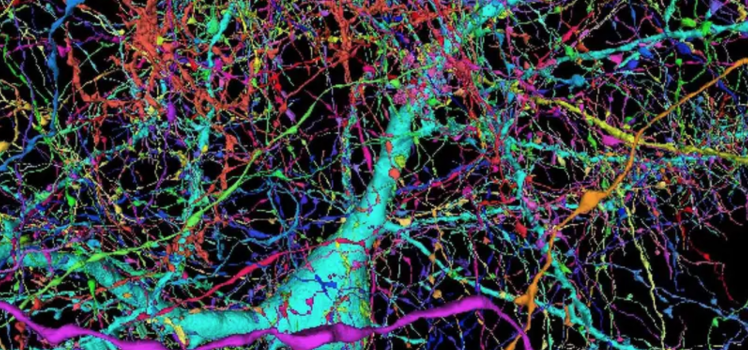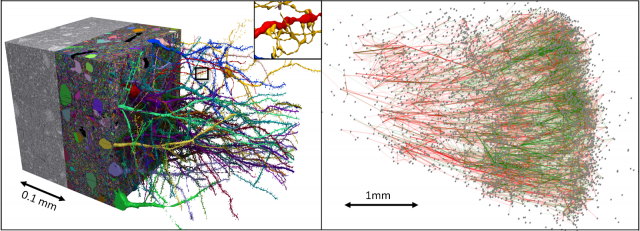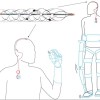A Brain. A Map. Amazing.

If you have never pondered the nature of exponential change/growth in knowledge, consider this.
The human brain is one of the most complex structures in existence. Google, in collaboration with Harvard University, have released a browsable 1.4-petabyte reconstruction of a very small part of the human cortex.
This is every cell and connection in a cubic millimeter of the human brain.

The volume spans all six cortical layers.
The map includes 50,000 cells, all rendered in three dimensions. They are joined together by hundreds of millions of spidery tendrils, forming 130 million connections called synapses. The data set measures 1.4 petabytes, roughly 700 times the storage capacity of an average modern computer.
“A whole mouse brain is only 1000 times bigger than this, an exabyte instead of a petabyte,” says Lichtman. “It’s on a scale where we probably will be able to do that within a decade, I suspect.”
Dr. Jeff W. Lichtman – New Scientist
What is the Human Cortex?
The cerebral cortex is the thin surface layer of the brain found in vertebrate animals that has evolved most recently, showing the greatest variation in size among different mammals (it is especially large in humans). Each part of the cerebral cortex is six layered (e.g., L2), with different kinds of nerve cells (e.g., spiny stellate) in each layer. The cerebral cortex plays a crucial role in most higher level cognitive functions, such as thinking, memory, planning, perception, language, and attention. Although there has been some progress in understanding the macroscopic organization of this very complicated tissue, its organization at the level of individual nerve cells and their interconnecting synapses is largely unknown.
According to Google, it’s the largest brain map at this level of detail to date, and it’s freely available to scientists (and anyone) online. The link is here.
Also…


